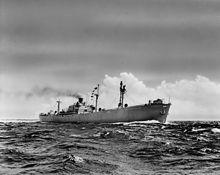 | |
| Company type | Private |
|---|---|
| Industry | Maritime transport |
| Founded | 1920 |
| Headquarters | Houston – San Francisco, California, |
Area served | North America |
Key people |
|
| Services | Passenger and Cargo Liners |
| Revenue | ($48 Million) |
Number of employees | 206 employees |
| Website | www |
General Steamship Company was founded in 1920 in Houston, Texas, United States, as a Private Company, and now goes by Gensteam since 1996. [1] General Steamship Company has a fleet of cargo ships that operate worldwide. Gensteam has a Gensteam Operations Desk website that tracks all shipping logistics. Gensteam headquarters is now in San Francisco, California. General Steamship Company was part owner of American Pacific Steamship Company in New York state and Los Angeles during and post World War II. American Pacific Steamship Company was founded in 1942 in New York City, and was previously called Los Angeles Tanker Operators Inc. which operated T2 tanker ships. During World War II the General Steamship Company and American Pacific Steamship Company were active with charter shipping with the Maritime Commission and War Shipping Administration. [2] [3] [4] [5]
Contents
- Offices
- History
- Los Angeles Tanker Operators, Inc.
- General Steamship Company ships
- American Pacific Steamship Company
- Los Angeles Tanker Operators Inc ships
- See also
- References
- Divisions:
- General Steamship Agencies is Gensteam United States operation. [6] [7]
- Wheelhouse Shipping Agency is Gensteam Canada operation. Wheelhouse Shipping Agency was formed from the merger of Canadian Empire Shipping and Compass Marine in 2017. [8]
- Alaska Maritime Agencies is Gensteam Alaska operation. Formed in 1960 as a joint venture between Kerr Steamship Company and General Steamship. [9]



